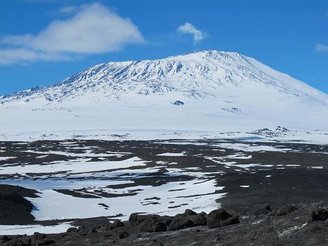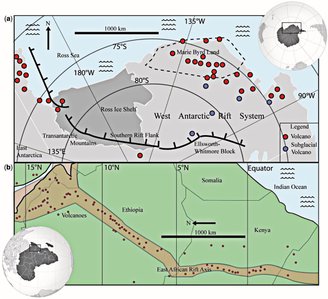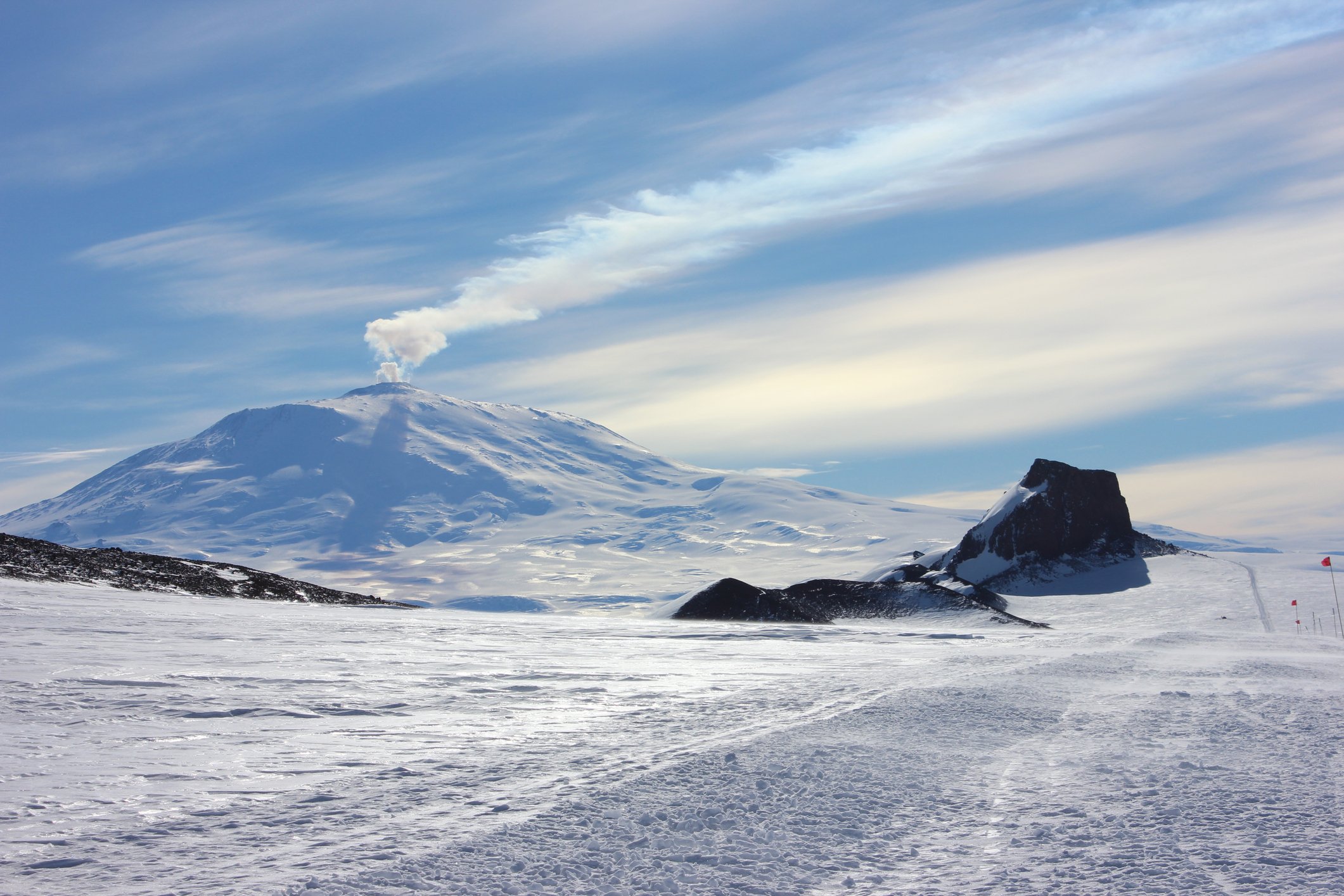Although global concerns are increasing about the possibility of melting polar ice caps due to global warming, Little is said about the existence of large lava massesIt was detected by geophysical studies carried out under some glaciers in West Antarctica.
A group of researchers from Scotland’s University of Edinburgh analyzed surface ice data in relation to sea level, aerial photographs and volcano databases to improve the hitherto limited understanding of this region of the planet. First inventory of volcanism in the 2.5 million square kilometer area called the West Antarctic Rift System.
It was published in the journal Geological Society. The study revealed that 138 volcanoes emerged in a large region of geological faults and tectonic activity. 91 of these had not yet been identified before. Could some of these volcanoes, concentrated primarily in a central axis greater than 3,000 kilometers across, erupt on Earth’s southernmost continent?
What is the risk of volcanic eruption in Antarctica?
Although all of these volcanoes are living evidence of the existence of molten rocks on our planet, the probability of a large-scale volcanic eruption in Antarctica is considered low. Although it is considered geologically young It has not yet been determined whether the volcanoes in the region are volcanically active. according to the study.
Currently, there is Only two volcanoes known to be active: Mount Erebus, located 3,794 meters above sea level on Ross Island; and Deception Island volcano, a horseshoe-shaped volcanic caldera in the South Shetland Islands that is the only active volcanic crater in the world that allows close navigation.
However, depending on the size of the eruption, the location of the volcano and weather conditions, A possible volcanic eruption in Antarctica could have serious consequences such as melting ice with rising sea levels, tsunamis, ash clouds in nearby areas such as South America, and impacts on marine fauna.
Could Erebus and Deception Island cause a violent explosion?

In reality, Mount Erebus has been erupting continuously since 1972. Conor Bacon, a researcher at Columbia University’s Lamont-Doherty Earth Observatory, explains to Live Science. However, since these explosions, called Strombolian, are short-term, moderate-intensity explosions, they do not pose an immediate risk to people and the environment.
According to NASA’s Earth Observatory, this means that Erebus “emits clouds of gas and vapor,” even vomiting up some rock “bombs” on occasion. Although these emissions include lava and ash, they are in small amounts. The main lava of the volcano flows into the crater or a permanent lava lake, which does not threaten residential areas.
The volcano on Decepcion Island is a horseshoe-shaped caldera of approximately 10 kilometers. Carved out of ice by successive eruptions since 1970. Currently activity is limited to fumaroles, hot springs and diffuse gas emissions. The island is a regular tourist destination and is home to many research stations, such as Estação Comandante Ferraz in Brazil.
How to track all volcanoes in Antarctica?

The existence of two volcanoes in Antarctica is unknown, although they are constantly monitored by scientists. because it is almost impossible to predict with 100% accuracy when one of them will explode. Not to mention that there are 126 more volcanoes that are not subject to any monitoring.
Even Erebus and Deception Island “have only a small number of permanent monitoring devices,” Bacon says. Permanent networks consist of seismographs to detect seismic activity associated with volcanic events. Deploying extensive networks with more complex equipment is still subject to many logistical challenges, the researcher says.
The biggest one, according to Bacon, is that in addition to the difficulty of transporting equipment to monitoring sites in Antarctica, permanent facilities must be extremely durable to withstand adverse temperature conditions and install reliable energy sources that can survive the “long polar nights.” “.
Did you like the content? So, stay up to date with more studies on the geology of our planet at TecMundo and take the opportunity to find out whether blue lava exists.
Source: Tec Mundo
I’m Blaine Morgan, an experienced journalist and writer with over 8 years of experience in the tech industry. My expertise lies in writing about technology news and trends, covering everything from cutting-edge gadgets to emerging software developments. I’ve written for several leading publications including Gadget Onus where I am an author.












